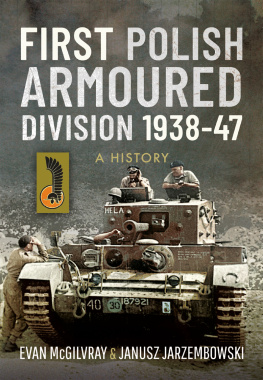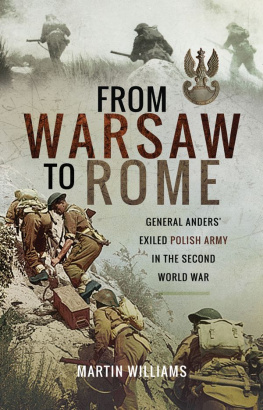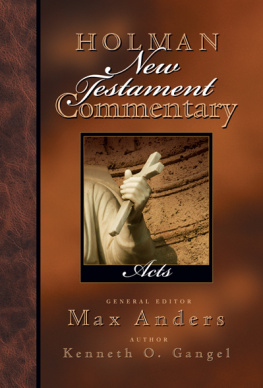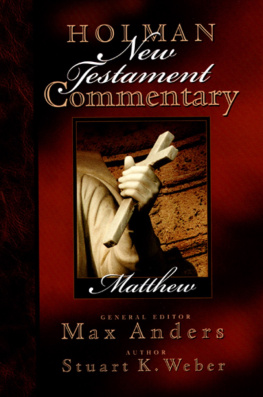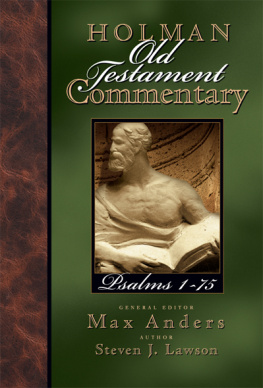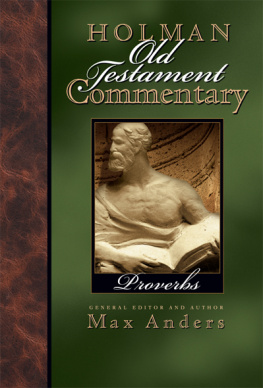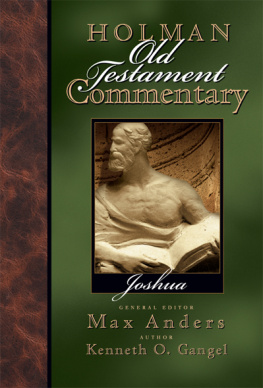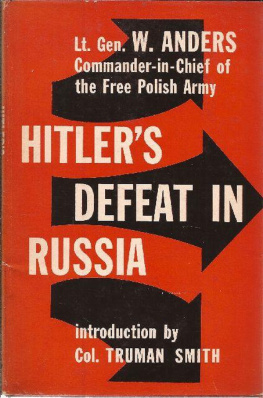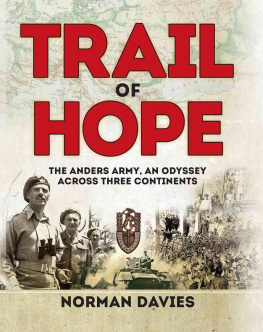Anders Army
This work is dedicated to the memory of Franciszek Hauszczak (19201967)
Born in Poland served in Children of Lwow 6th Armoured Regiment as Liaison Officer to 10th Indian Division. Wounded at Piedimonte, 18 May 1944.
Died in Leeds, 1967.
Anders Army
General Wadysaw Anders and the Polish Second Corps 1941-46
Evan McGilvray
First published in Great Britain in 2018 by
Pen & Sword Military
an imprint of
Pen & Sword Books Ltd
47 Church Street
Barnsley
South Yorkshire
S70 2AS
Copyright Evan McGilvray 2018
ISBN: 9781473834118
eISBN: 9781473889750
Mobi: ISBN 9781473889743
The right of Evan McGilvray to be identified as Author of this work has been asserted by him in accordance with the Copyright, Designs and Patents Act 1988.
A CIP catalogue record for this book is available from the British Library.
All rights reserved. No part of this book may be reproduced or transmitted in any form or by any means, electronic or mechanical including photocopying, recording or by any information storage and retrieval system, without permission from the Publisher in writing.
Pen & Sword Books Limited incorporates the imprints of Atlas, Archaeology, Aviation, Discovery, Family History, Fiction, History, Maritime, Military, Military Classics, Politics, Select, Transport, True Crime, Air World, Frontline Publishing, Leo Cooper, Remember When, Seaforth Publishing, The Praetorian Press, Wharncliffe Local History, Wharncliffe Transport, Wharncliffe True Crime and White Owl.
For a complete list of Pen & Sword titles please contact
PEN & SWORD BOOKS LIMITED
47 Church Street, Barnsley, South Yorkshire, S70 2AS, England
E-mail:
Website: www.pen-and-sword.co.uk
Acknowledgments and Thanks
I owe a great debt of thanks to Janusz Jarzembowski as not only has he proved to be a great friend but has contributed so much to this work. Janusz has waived the copyright of images reproduced here taken from his late fathers archive now known as the Armoured Hussars Archive. In addition Janusz had freely given advice in correspondence regarding the images and my work in general. I am also grateful for Januszs input in providing captions for the images as well as the provision of the map used to illustrate the book.
I also wish to thank Roman Hauszczak for allowing me to use his late fathers book as well as providing other material concerning the Italian Campaign, especially the Battle for Monte Cassino.
Further thanks go to Andrzej Suchcitz and Jadwiga Kowalska at PISM for their help and cooperation in this work. Their knowledge remains unsurpassed.
Thank you to George Anderson for his swift turnaround of the map and at such a good price. And of course my family, who help me in my daily struggles with IT and tend to keep me on track.
Evan McGilvray
Pudsey
Palm Sunday 2017.
Chapter 1
General Wadysaw Anders,
Origins and the Polish Army, 18921939
T he future General Anders was born on 11 August 1892 near Warsaw. Anders, like a number of twentieth-century Polish military heroes actually had little Polish blood in him and, in his case, originated from German stock; hence his rather un-Polish family name. Furthermore, unlike most Poles he was born into a Protestant family rather than Catholic, as many Poles were and remain so. At the time of Anders birth there was no Polish state as it had been wiped from the world map in 1795, a result of annexation and division by the three east-central European empires of Austria, Prussia (after 1870 Germany) and Russia. Anders was born in the Russian sector of Poland. His family were unassuming people and there was nothing in his background which may have pointed towards the leader he became, or the controversy which he was to provoke. As Anders and Poland grew together, they were both shaped by the events of the twentieth century.
Anders father, Albert, was an estate manager and at the time of Anders birth was running an estate near Warsaw. He later moved to manage a large estate for Prince Vasilchikov at Taurogi, north of the river Niemen, today in Lithuania. During this period the young Wadysaw Anders remained in Warsaw where he was educated in a local grammar school. In 1909 at the age of 17 Anders had completed his secondary education. There was a slight shadow cast over the early years of Anders however, as under Imperial Russian rule, most young men who were subjects of the Russian Emperor, the Tsar (in 1909, the ruler was Tsar Nicholas II), were required to serve in the Russian Army once they reached the age of 21 years. Young men were conscripted to serve for a period of three years compulsory military service in the army, however this could be reduced by volunteering to serve immediately after leaving secondary education. If a youngster volunteered to serve the three-year compulsory term was reduced to a single year of military service. This meant that after completing their year of voluntary service young men were free to attend university without any interruption, having already completed their obligations regarding military service. Many young men from Polish families took this step and Anders was no exception.
At the end of September 1910 Anders, as a volunteer, joined a cavalry regiment, the 3rd Novorossiysk Dragoons in Kownie, close to where his father was working. Anders was quickly sent to the regimental school for the training of non-commissioned officers (NCO). In April 1911 he was promoted to the rank of corporal and by June 1911 he had finished his training at the school. During September 1911 Anders passed the examinations necessary to qualify as a reserve cadet officer in the 3rd Cavalry Division. On 1 October 1911 he was released from his obligations to serve in the Russian military and was placed on the army reserve list as a cadet officer. After this and for the next three years, Anders studied mechanical engineering at Riga Technical University. In 1912 however, an incident occurred which was to have a profound effect on the remainder of Anders life: he saved the lives of two generals when the horses pulling their coach bolted. As panic set in Anders stepped up to the plate and was able to get to the horses and bring them back under control. One of the generals in the coach, General Pavel Rennenkampf, a Russian general despite his clearly German surname, told Anders that if he was ever in any difficulty he was to get in touch with him.
When it became likely that Russia might go to war during the summer of 1914 Anders took Rennenkampf at his word. Anders was recalled to serve in the Russian Army on 23 July 1914, but instead of a chance of action he was told to report to a horse-drawn supply unit which brought provisions to Rennenkampf s Army. Anders immediately telegraphed Rennenkampf about his posting. Rennenkampf changed the order and Anders got what he desired: a posting to a front-line cavalry regiment, the 3rd Dragoon Regiment, IV Cavalry Corps of the Russian First Army which Anders joined on 23 September 1914. Very soon Anders was in the thick of the fighting of the 1914 Eastern Front and perhaps like many young men and soldiers, seeking glory.


